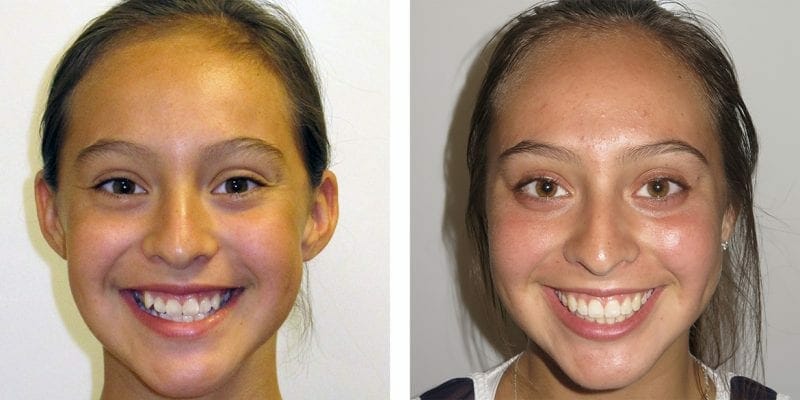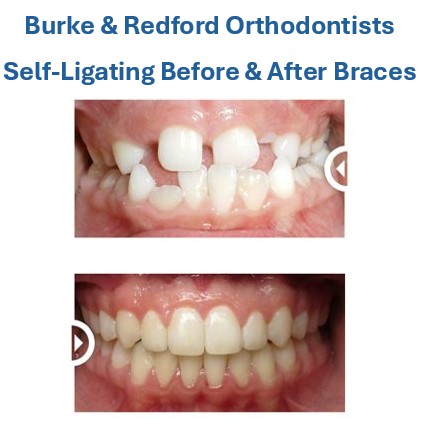Damon Braces vs. Lingual Braces: Which Is Right for Your Child?
At Burke & Redford Orthodontists, located in Temecula and Lake Elsinore, Dr. Redford and Dr. Burke have been providing top-tier orthodontic care to kids, teens, and their families in the Inland Empire for over 30 years.
Choosing the right type of braces for your child is an important decision. Comparing Damon self-ligating braces and lingual braces will help you understand the difference between these different types of options.
Dr. Redford will discuss options and provide the best recommendation for your child or teen during their initial orthodontic consultation.
Braces Options to Consider
Orthodontic treatment is essential for correcting dental issues and ensuring your child’s oral health. Among the modern options available, Damon braces and lingual braces have become popular. Understanding the differences between these two can guide you in choosing the best treatment for your child’s needs.
What Are Damon Braces?
Damon Braces are a type of self-ligating braces that use a unique sliding mechanism to hold the archwire in place.
– Self-Ligating System: Doors on each individual bracket secure the archwire to the braces system.
– Comfort: Quicker adjustment appointments and less frequent office visits compared to traditional braces.
– Esthetic Options: Available in clear versions for a more discreet look.

What Are Lingual Braces?
Lingual Braces are attached to the back of the teeth, making them invisible from the front.
– Hidden Placement: Completely concealed behind the teeth.
– Effectiveness: Suitable for treating mild to moderate orthodontic issues.
– Adaptation: May require a prolonged adjustment period for comfort and speech.

Comparing Effectiveness
Both Damon Braces and Lingual Braces are effective, but they function differently.
Damon Braces
– Effective, tried and true mechanics for moving teeth.
– Shorter adjustment times.
– Longer intervals between adjustment appointments.
Lingual Braces
– More technique sensitive. Can be difficult to achieve good results in complex cases.
– Longer adjustment period due to tongue irritation and speech difficulties.
– May take longer to see results compared to Damon Braces.
Comfort and Convenience
Comfort and convenience are crucial factors, especially for children and teens.
Damon Braces
– Reduced discomfort with the braces on the outside of the teeth instead of on the tongue side.
– Fewer adjustments mean fewer visits to the orthodontist.
– Less irritation to the cheeks and gums.
Lingual Braces
– Initial and potentially prolonged discomfort due to tongue irritation.
– Speech will be affected initially, requiring an adaptation period.
– Longer chair time for adjustments and maintenance.

Esthetic Appeal
For many children and teens, the appearance of braces is a significant concern.
Damon Braces
– Clear options are available, making them less noticeable.
– Suitable for those who want a discreet look but can tolerate some visibility.
Lingual Braces
– Completely hidden from view.
– Ideal for those who prioritize invisibility of their braces.
Maintenance and Oral Hygiene
Maintaining good oral hygiene is vital during orthodontic treatment.
Damon Braces
– Easier to clean with fewer components.
– Less plaque buildup around the brackets.
– Standard brushing and flossing techniques apply.

Lingual Braces
– More challenging to clean due to their position.
– Requires diligent oral hygiene practices to prevent plaque buildup.
– Specialized tools and techniques may be needed for effective cleaning.
Cost Considerations
The cost of orthodontic treatment is an important factor for many families.
Damon Braces
– Generally, less expensive than lingual braces.
– Costs can vary based on the complexity and duration of treatment.
– Financing options and payment plan available, if qualified.
Lingual Braces
– Typically, more expensive due to specialized installation and maintenance.
– Higher initial cost but can be justified by the complete invisibility.
– Consultation needed to provide a precise cost estimate.
Patient Experiences and Testimonials
Hearing from other patients can provide valuable insights.

Damon Braces
– Many patients praise the quality of result and overall experience of Damon braces.
– Positive feedback on ease and simplicity of adjustments during orthodontic visits.
Lingual Braces
– Mixed reviews due to initial and prolonged discomfort but high satisfaction with invisibility.
– Testimonials often highlight the confidence boost from having hidden braces.
Which Is Right for Your Child?
Choosing the right type of braces depends on your child’s specific needs, lifestyle, and preferences.
Consider Damon Braces if:
– Comfort and shorter treatment times are a priority.
– Your child wants a less noticeable option but can tolerate some visibility.
– Ease of maintenance and longer intervals between orthodontic visits are important.

Consider Lingual Braces if:
– Complete invisibility of the braces is the top priority.
– Your child is willing to adapt to initial and potentially prolonged discomfort and speech changes.
– You are prepared to invest more in a hidden orthodontic solution.
Both Damon Braces and lingual braces offer unique advantages. Damon Braces provide comfort, efficiency, and esthetic options, making them a popular choice.
Lingual Braces offer the highest level of discretion, ideal for those prioritizing invisibility with some drawbacks.
Consulting with Dr. Ryan Redford or Dr. Burke can help determine the best option for your child’s orthodontic needs.
Call to Request a Consultation
Contact Burke & Redford Orthodontists today on (951) 699-8011 to request a consultation or fill out the form through our website anytime. Our experienced team in Temecula and Lake Elsinore will assess your child’s needs and guide you towards the best treatment plan for achieving a beautiful, confident smile.
